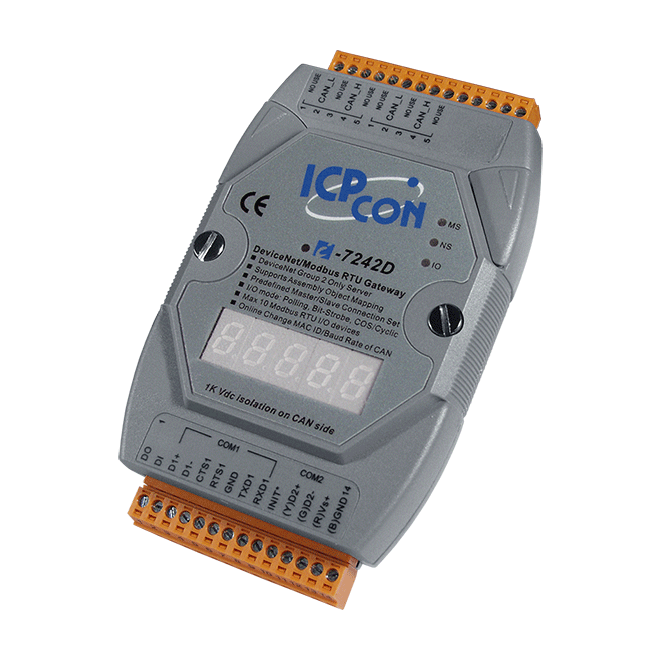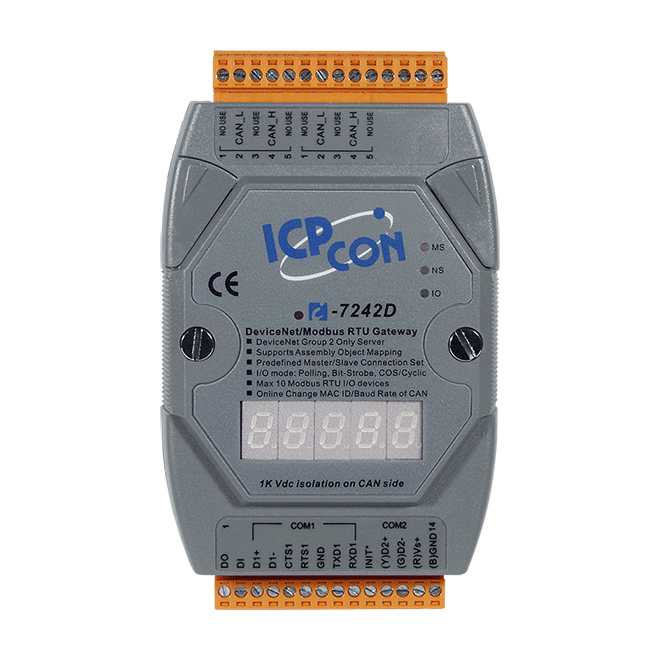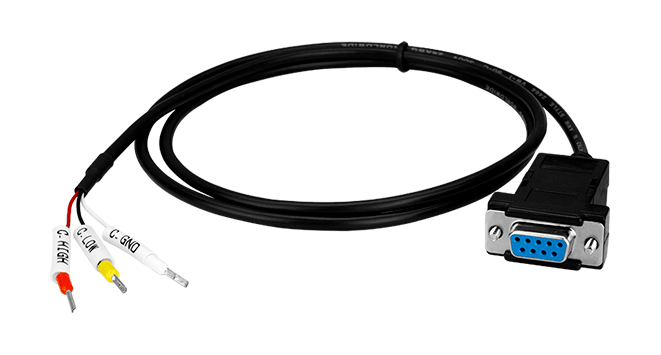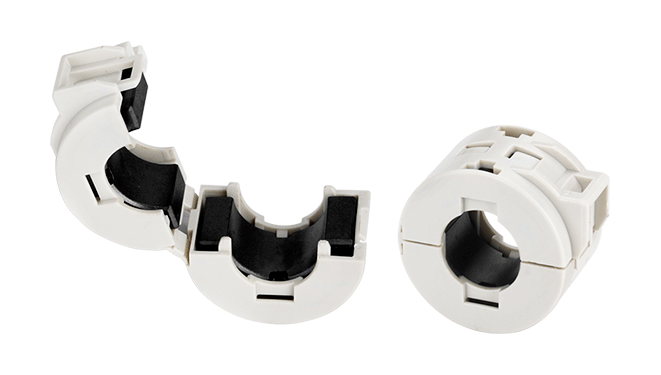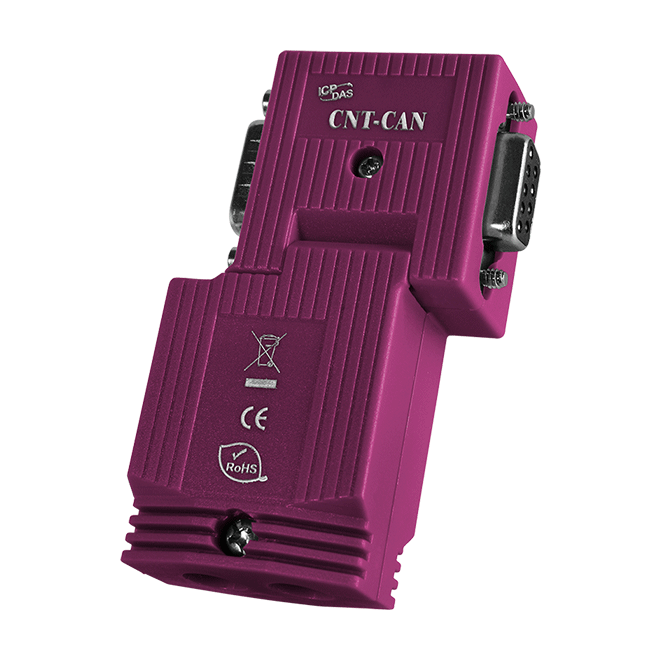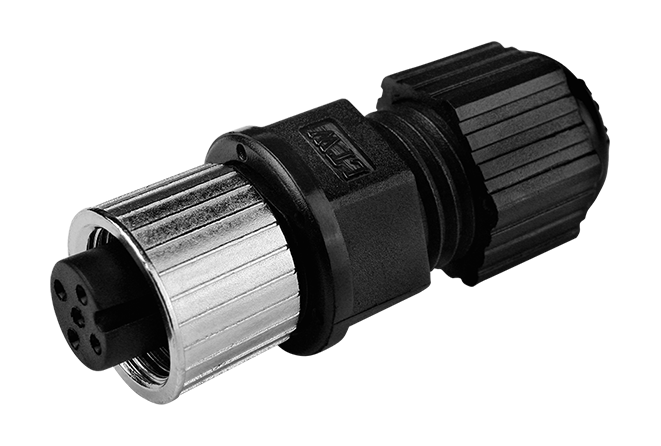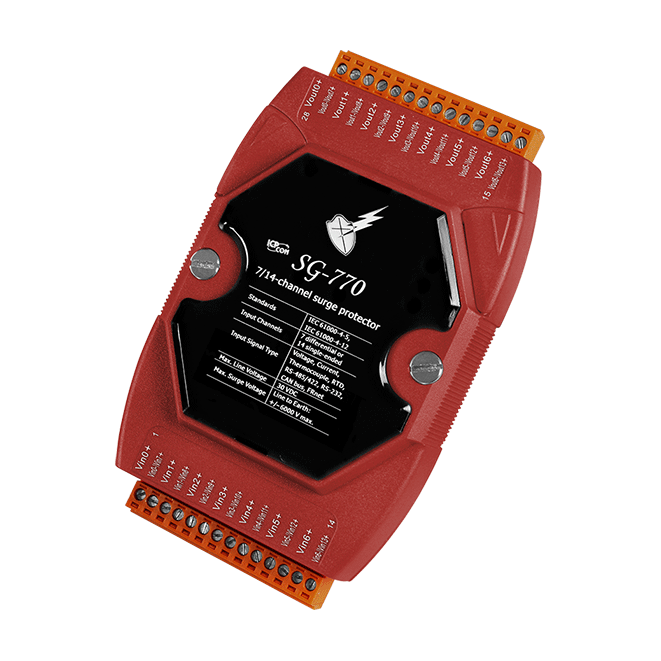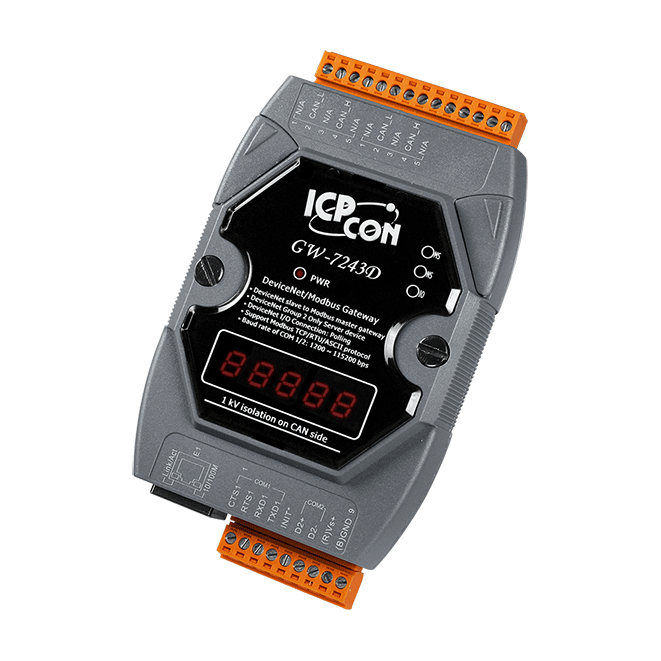Introduction
The I-7242D allows a master located on a DeviceNet network to enter into a dialogue with the slaves on a Modbus RTU network. It's a "Group 2 Only Slave" device in the DeviceNet network, and supports "Predefined Master/Slave Connection Set". From the view of the Modbus network, it is a Modbus RTU master which polls all the predefined data of the Modbus RTU slaves and bypasses the DeviceNet control commands to the Modbus slaves. This device is widely used in the application of building automation, remote data acquisition, environment control and monitoring, laboratory equipment & research, factory automation, etc. The I-7242D also has the utility tool which is used to configure the I-7242D's parameters and build the EDS file. Through the EDS file to the I-7242D, it is easy to apply the Modbus RTU devices in DeviceNet applications.
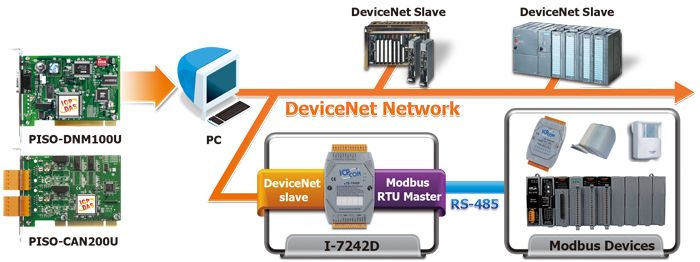
Applications

• Control System
• Building Automation
• Factory Automation
• Distributed data acquisition
Ordering Information
| PRODUCT SERIES | DESCRIPTION | QNT. | INQUIRY |
|---|---|---|---|
Similar Products
| CPU Module | |
|---|---|
| CPU | 80188, 40 MHz or compatible |
| EEPROM | 16 KB |
| Watchdog Timer | Yes |
| LED Indicators | |
|---|---|
| Status | 1 x Power 2 x DeviceNet status |
| COM Ports | |
|---|---|
| Ports | 1 x RS-232 (Utility Port) 1 x RS-485 (Modbus) |
| Baud Rate | 1200, 2400, 4800, 9600, 19200, 38400, 57600, 115200 |
| Protocol | RS-485 (Modbus RTU) |
| Parity | None, Even, Odd |
| Data Bit | 7, 8 |
| Stop Bit | 1, 2 |
| DeviceNet | |
|---|---|
| Controller | NXP SJA1000T with 16 MHz clock |
| Ports | 1 |
| Connection Supported | 1 connection for Explicit Messaging 1 connection for Polled I/O 1 connection for Bit-Strobe I/O 1 connection for COS/Cyclic I/O |
| Isolation | 1000 VDC for DC-to-DC, 2500 Vrms for photo-couple |
| Terminal Resistor | Jumper for 120 Ω terminal resistor |
| Specification | Volume I, Release 2.0 & Volume II, Release 2.0 |
| Shutdown Message | Yes |
| Heartbeat Message | Yes |
| Subscribe | Group 2 Only Server |
| Power | |
|---|---|
| Input Range | +10 VDC ~ +30 VDC |
| Consumption | 3 W |
| Mechanical | |
|---|---|
| Dimensions (mm) | 72 x 122 x 33 (W x L x H) |
| Installation | DIN-Rail |
| Environment | |
|---|---|
| Operating Temperature | -25 ~ +75 ℃ |
| Storage Temperature | -30 ~ +80 ℃ |
| Humidity | 10 ~ 90% RH, Non-condensing |
The I-7242D Utility is help users to configure the devices, and has following features:
- Support DeviceNet node ID, baud rate setting
- Support Modbus RTU parameters setting
- Show Modbus RTU devices configuration
- Show DeviceNet application and assembly objects configuration
- Support DeviceNet Polling, Bit-Strobe and COS/Cyclic Produced and Consumed connection path setting
- Dynamic produce EDS file
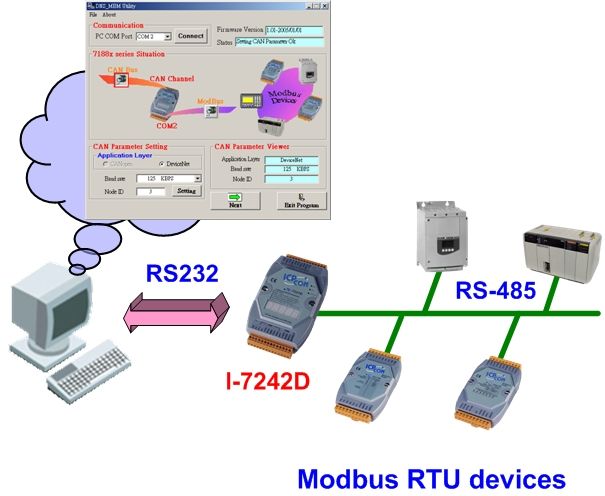
Usage
The simple steps about how to use DNS_MRU gateway are described as follows:
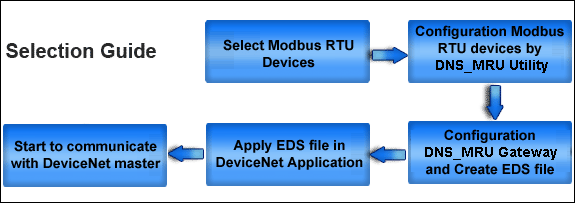
Modules Support
| Code | Name | Description |
|---|---|---|
| 01 (0x01) | Read Coil Status | Read the ON/OFF status of discrete outputs in the slave |
| 02 (0x02) | Read Input Status | Read the ON/OFF status of discrete inputs in the slave |
| 03 (0x03) | Read Holding Registers | Read the binary contents of holding registers in the slaves |
| 04 (0x04) | Read Input Registers | Read the binary contents of input registers in the slaves |
| 15 (0x0F) | Force Multi Coils | Forces each coil in a sequence of coils to either ON or OFF |
| 16 (0x10) | Preset Multi Registers | Preset value into a sequence of holding registers |

